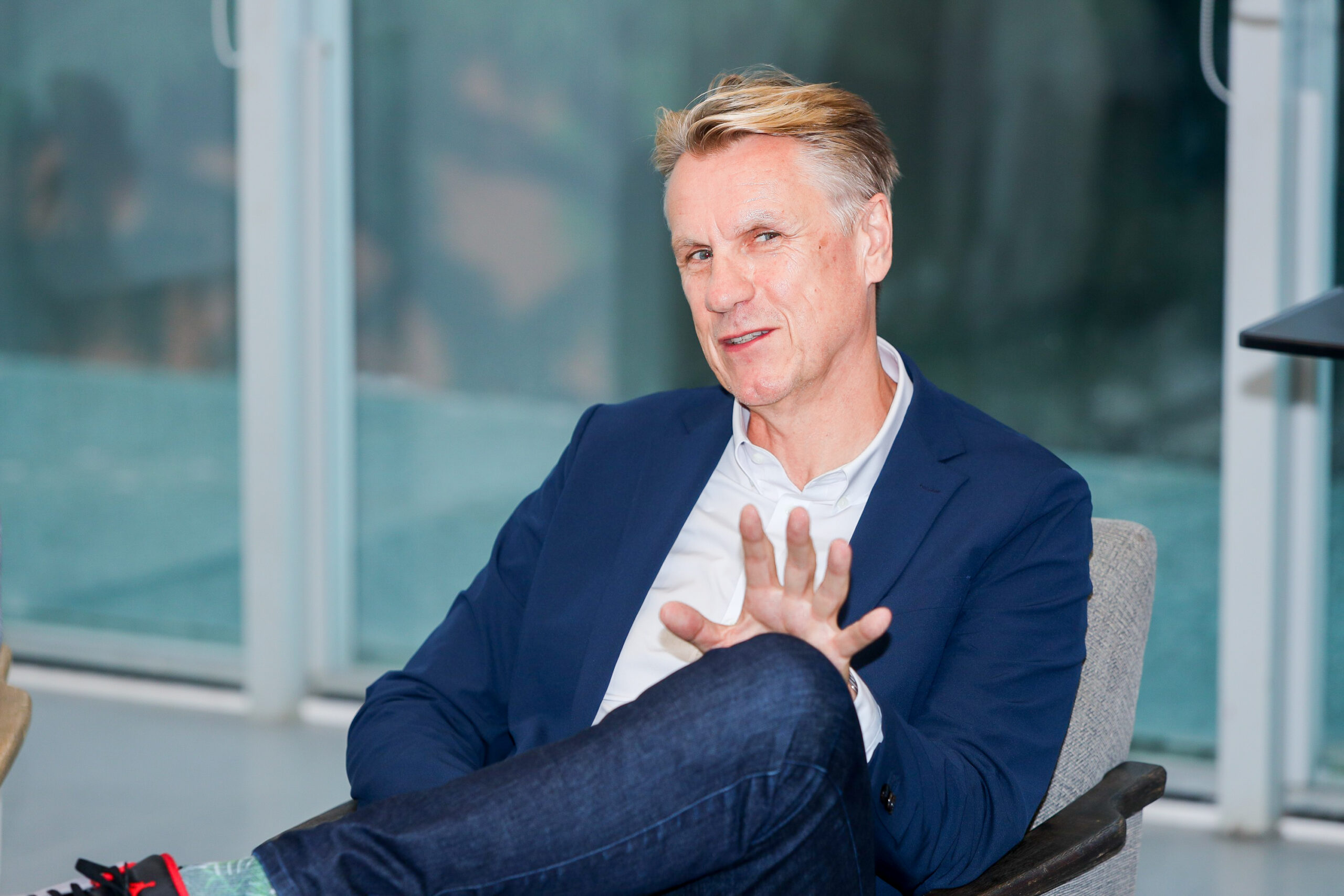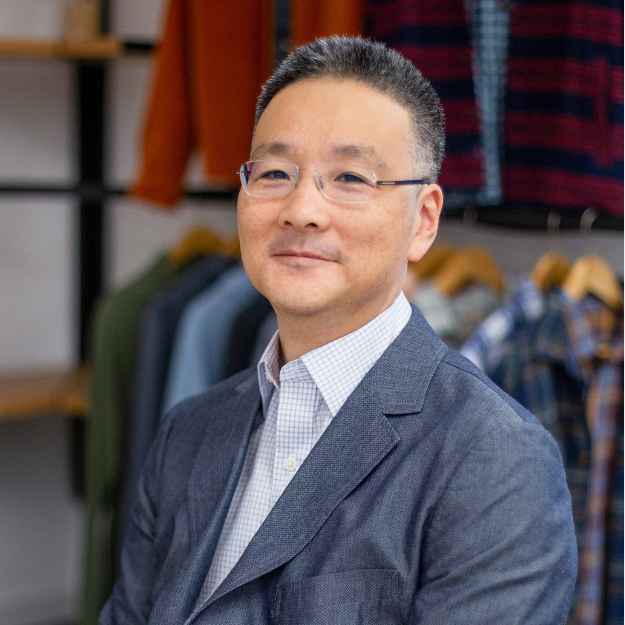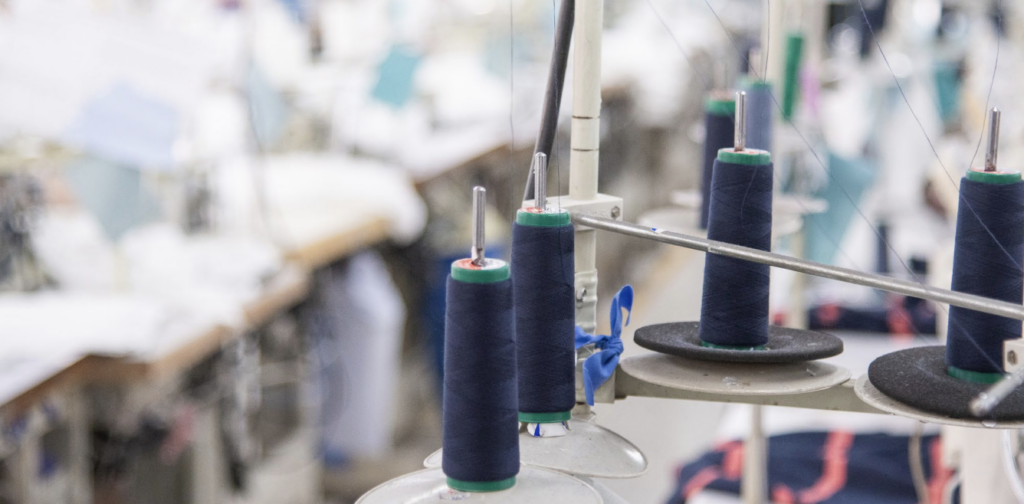
Dear Fashion: Let’s Step Up and Get Aligned
In a recent opinion editorial with WWD, CEO Colin Browne argues fashion needs to take more serious and coordinated action on sustainability. Read the highlights here!

As part of a recurring series, SAC details the involvement and vision of its Board members. Here, Delman Lee, vice chair of Tal Apparel Limited.
Few have been involved from the start but SAC founding member TAL Apparel Limited has seen the organization through a trajectory of changes, including the recent CEO transition and upcoming rebrand. For Delman Lee, vice chair of TAL Apparel Limited, the apparel industry is family matters. He’s a third-generation apparel manufacturer, though despite his notoriety in the industry he also boasts a doctorate from the University of Oxford and a bachelor’s in electrical engineering.
His reflections are summarized in an interview with the SAC.
SAC: How long have you been involved with the SAC?
Delman Lee: Since the beginning; TAL is one of the founding members. We were invited to join by Levi’s. At that time, the annual meeting had three tables. I’ve been involved since the outset, well past a decade now.
SAC: What about the Board?
D.L.: This is my second term. So, it will be three and a half years.
SAC: It seems you really understand the technical nature of supply chains, but have you always considered yourself a sustainability advocate?
D.L.: No, I have not. I was and am an electrical engineer. I spent many years doing research before coming back to the family business. And once I got involved in the business, very early on, I took up the responsibility of looking after [corporate social responsibility] CSR.
I got into sustainability while trying to build a responsible company. That word ‘responsibility’ has transpired into different names. It was CSR at that time, and sustainability now. Because it’s a labor intensive business, there are a lot of social issues. But soon, the environmental challenge came up. At that time I was looking for a framework or language to talk about environmental sustainability and then SAC popped up.
It’s interesting, before Levi’s called me, we heard there was a group formed by some big brands. Patagonia was working on something, and we were wondering who [else] they were. I was very happy that I actually got a call because we were looking for something to unify the way we talk about sustainability, and in particular, environmental [aspects] at that time.
SAC: It’s nice to hear there was a pre-competitive need and collaboration to do something about it. Do you feel like your sustainability aims for Tal have changed over time, and what are they now?
D.L.: TAL has also evolved in the time I’ve been there. We’ve always been a company who cares about the workers and the environment. Sustainability was already what we call ‘value drivers’ of the company. When we did the three-year plan [a decade ago], there were eight value drivers: profit, sales, innovation, employee engagement, the usual stuff, but sustainability was one of the eight, in all three year plans.
More recently it has evolved in our latest strategy review. We changed the purpose of the company to be: “To lead change in how the world sustainably clothes itself.” Sustainability has changed from one of the eight company value drivers to be the long-standing purpose of the company, three years ago.
SAC: And similarly, what about for the SAC, and maybe the broader industry?
D.L.: I think the aims are the same but the tasks are still enormous. To change an industry by collaborating amongst the peers in the supply chain is a difficult one.
SAC: Because the SAC represents over half the textile and apparel industry, it really reflects the kind of progress and pain points of sustainability progress. Where do you see more room for growth and improvement?
D.L.: It has made a lot of progress over the past decade. They built the [Higg Index] tools through the many collaborations with all of the members – whether you are a supplier or a brand or retailer. There are a lot of passionate folks working on all the details of the tools.
The tools and measurements are there, and we are more or less unified in the way we talk about environmental sustainability. On the social side, we are halfway there with Higg Facility Social & Labor Module (FSLM) or Social and Labour Convergence Program (SLCP).
People begin to ask, “Where’s the impact?” Collective action is one of our strategic pillars and approaches on how we use the tools to reflect how things are being done. But really, people need to get onto actions, in particular, for decarbonization because the deadline is coming very quickly for 2030.

TAL Apparel
SAC: Why are manufacturers interested in the SAC?
D.L.: As a manufacturer, we don’t participate in many multi-stakeholder initiatives because we’re a small team, and there are a lot of multi-stakeholder initiatives.
There are two reasons. Even right at the outset, the SAC’s approach to driving change was impressive. On the technical side, even 12 or 14 years ago, they introduced the idea of facility, environmental performance, product performance, and brand performance. There are multi-dimensions of sustainability, and this is a technical aspect that was pretty comprehensive at the time. And then the second reason is they involve partners across the supply chain. Manufacturers are actually at those tables. There are manufacturers talking about how to make the change.
A lot of multi-stakeholder initiatives are usually initiated by brands and retailers. Manufacturers are told to do something, or rarely consulted. A lot of the social and environmental issues are in the plant, so it’s always good to involve the people doing the change in the discussion about change.
We call this an equal partnership principle which has been instilled in SAC from the beginning, and that’s why you see a third of the board comprises brands and retailers, a third is manufacturers, and a third is affiliates. It’s in the governance model. That’s why it’s made so much progress and why it appeals to manufacturers to be part of this coalition.
SAC: How can the SAC, governments, NGOs, etc., support manufacturers more?
D.L.: For climate change, or even for social change, we do need a lot of players. NGOs, pressure groups, and coalitions like the SAC, to help bring people together and bring awareness to the issues.
For me, regulation, in particular on the environmental side, is one of the last levers for change in an industry or in a society, not just our industry but for many industries.
With regulation coming in, governments are beginning to put a price on decarbonization or forced labor. I think it’s a bit unfortunate that the private sector can’t do it by themselves but the private sector and pressure groups can get things going. That’s how big the change is, and not just for our industry. COP29, the United Nations, everyone has to get involved in this particular change.
SAC: What is essential in driving lasting change?
D.L.: A lot of work. The crux of one of the major problems, or the elephant in the room, is who is paying for it? The economic question has to be addressed somehow by someone. And progressive manufacturers may know this will just be the entry ticket to continue to play in this area.
But unfortunately, not everyone in the industry thinks like that. Some people think, “Maybe I can still be a little bit slower on this journey and still get away with it.”This doesn’t just apply to manufacturing, brands and retailers have the same issue, and in the end it ties to the consumer, as well.
If consumers aren’t paying with their pocket, buying or preferring brands that are sustainable, then it drives the behaviors of the brands. If a consumer doesn’t demand it or only certain section demands it, then it’s really not enough.
SAC: Who is involved in this?
D.L.: Now, to get something done. If you map out decarbonization, most of the footprint is actually in the fabric mill. So the fabric mill can make all the changes and can phase out coal if they want, but all that comes with a cost. It’s very simple. They may have just installed some machine that is coal based, how do they transition out of it?
At the end of the day, it is a cost-related issue. It requires some time commitment from the garment manufacturer, and the brands collectively agreeing to a long-term agreement because we’re still in a market economy. Some commitment of orders or long-term commercial agreement would help them to make that capital investment for change. If there is government or foundation funding that helps drive that – great. The industry is big, so you can’t only rely on philanthropic funding for that change. It’s really a combination of everything.
The financial market is also going through a sea change where they have to support the transition, as well. That’s just the commercial side, the other side is linked to the country, or the government of a particular country. So progressive brands, retailers or manufacturers can only progress so far. In Vietnam, for example, where we are based, even if we put solar panels on top of all my roofs, I will not hit my science-based target. It has to rely on off-site solar. And for off-site solar, the regulations are not clear. It depends on the Vietnamese government to allow a commercial entity to come in to set up off-site solar to basically decarbonize the grid. The decarbonization of the grid that we rely on is also part of the journey and that shows the country-level politics.
SAC: What is the single most important issue dividing the industry?
D.L.: It’s really, collectively, to have a mindset that we can do it. You just heard my story, it is multi-dimensional. It’s not just the brand committing to a manufacturer and the fabric mill; it’s the consumer, it’s the country you’re operating in, and it’s the wider energy transition. The whole thing is quite complex. We can work on the apparel-specific stuff: sustainable fibers, recycling, circular fashion, circular economy, but 2030 is only six years away, right? Six years can go by very fast.
Colin Browne, CEO, argues fashion needs to take more serious and coordinated action on sustainability.

Andrew Martin, EVP at Cascale, traces his visit to Hong Kong-based manufacturer Epic Group’s CIPL facility in Bangladesh showcasing sustainable innovation and a responsible future ahead.

At the end of June, Cascale published its 2023 Annual Report, showcasing many milestones, achievements, and a renewed strategic direction over the past year.